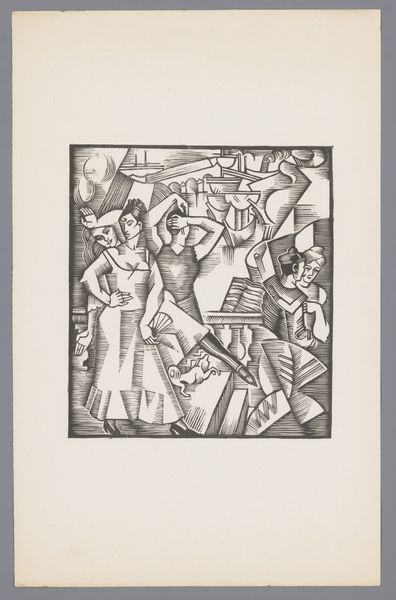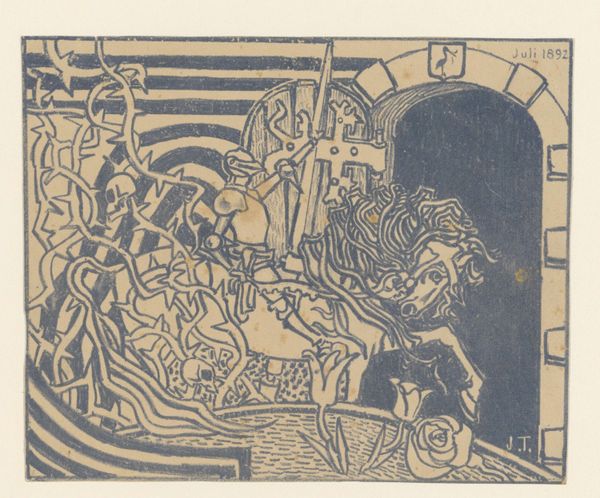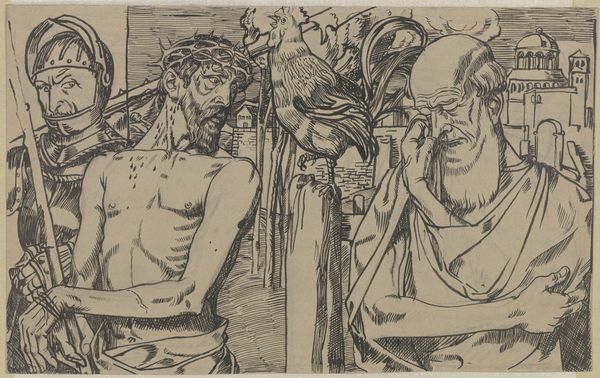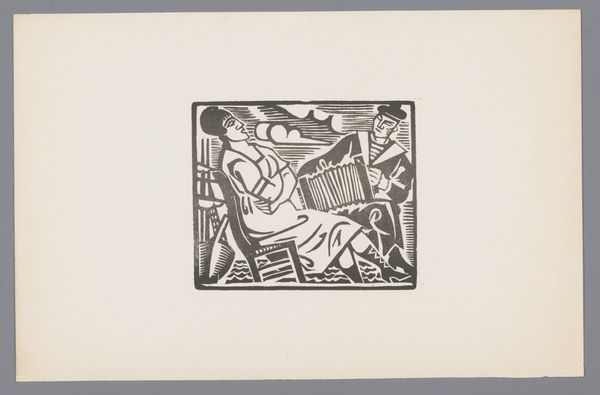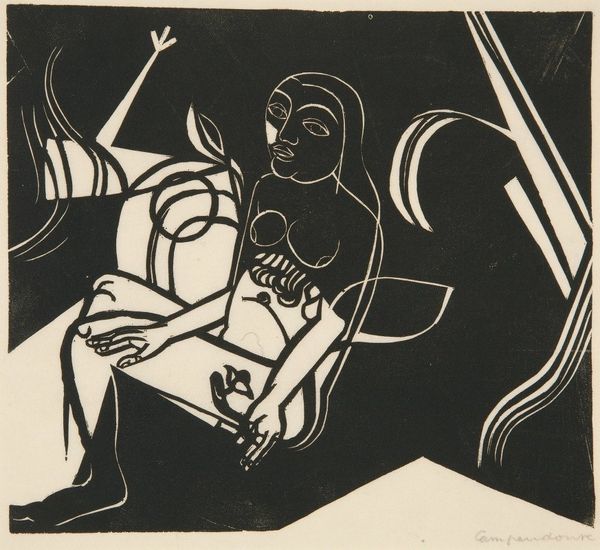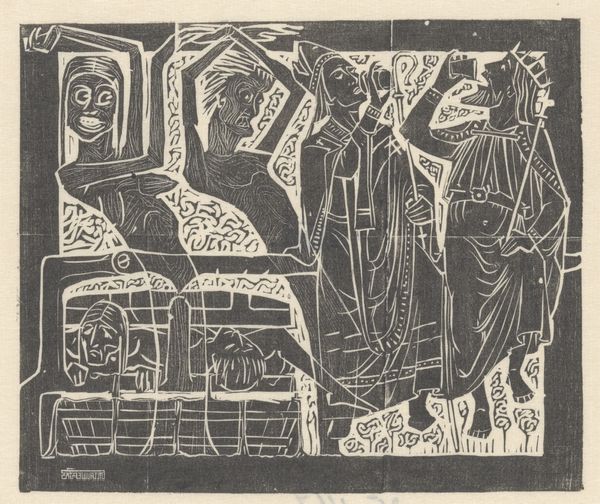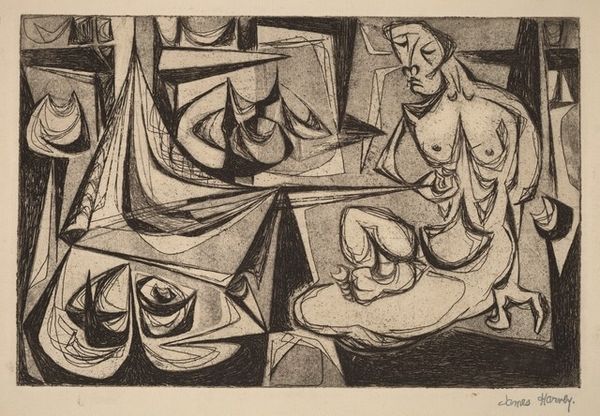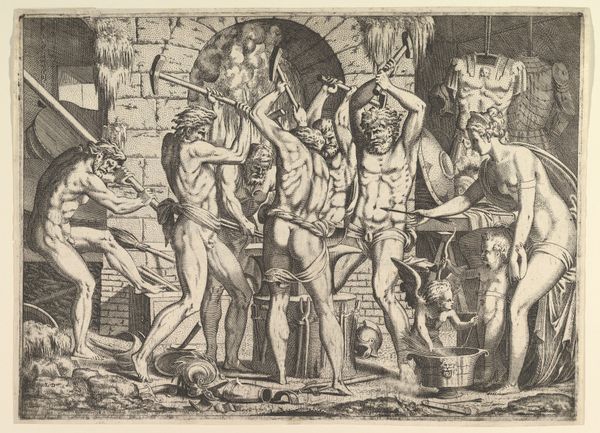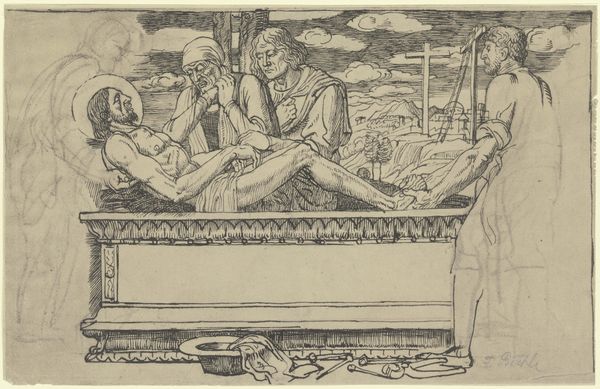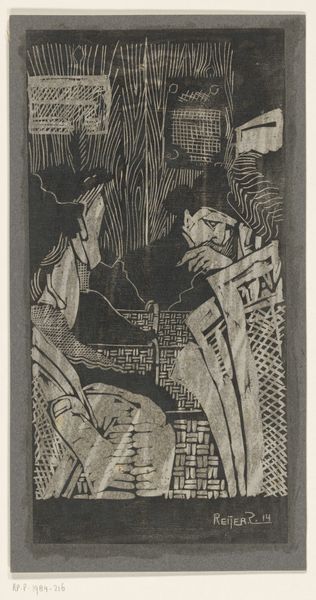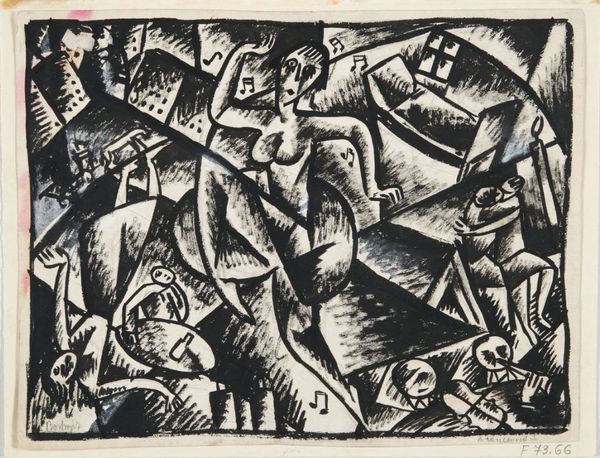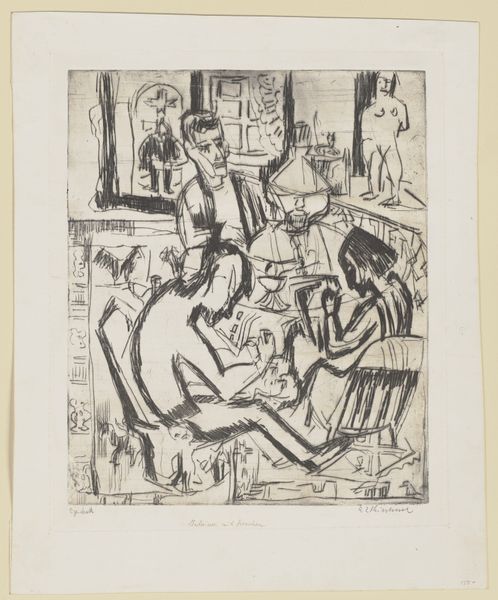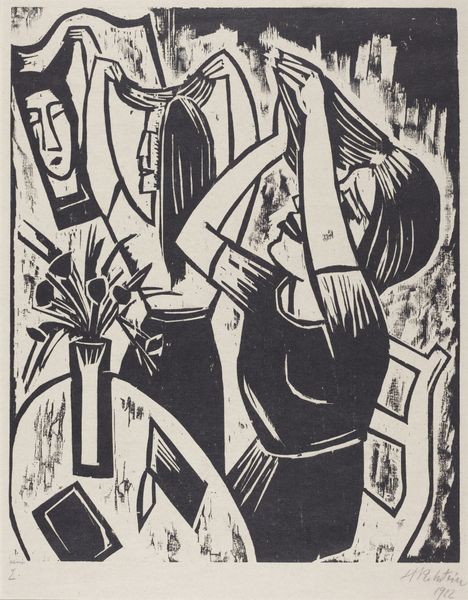
graphic-art, print, woodcut
#
graphic-art
#
cubism
# print
#
figuration
#
intimism
#
woodcut
#
cityscape
#
genre-painting
#
nude
#
modernism
Dimensions: height 232 mm, width 362 mm
Copyright: Rijks Museum: Open Domain
Curator: Here we have André Lhote's "Vrouw met ontbloot bovenlijf in een bar," which translates to "Woman with bare torso in a bar," a woodcut from 1925. Editor: It's so graphic, so noir! There is a woman holding what appears to be a glass of wine, semi-nude and dominating the foreground with this incredibly direct gaze. It gives me this unsettling mix of vulnerability and defiance. Curator: Lhote was very interested in Cubism. You can certainly see those fragmented forms at play here. The setting suggests a somewhat stylized view of modern Parisian nightlife. The scene is, from what is visible in the backdrop, possibly along a waterfront with what appear to be ship masts visible. Editor: It strikes me as an almost proto-feminist reclamation of the female body. In genre paintings, we so often see the male gaze explicitly indulged, but the emotional core is more internal, like a modern update to Munch’s expressionism but centered in the Jazz Age. Curator: I think you're right to bring up modernism. In art of the 1920s we begin to see new ways of approaching classical forms and tropes. But Lhote was very interested in structure and geometric composition, something learned as a cabinet maker and wood sculptor. I find the lack of color adds a powerful layer. This intense use of light and dark. Editor: The black and white amplifies the raw, almost desperate energy, especially with that fragmented composition. And yes, seeing it through a modernist lens helps— it gives this intimate setting the feel of urban displacement and the changing roles of women at the time. There's that sense of navigating public spaces, negotiating identity, sexuality. Curator: There's an almost reportage aspect, but without judgement. A moment captured in a social situation of this interwar period that provides much more food for thought beyond simply the representation. Editor: Definitely food for thought. It reveals this complex intersection of social, cultural and gendered experiences, distilled into a very visually striking tableau. The question is: how are these experiences reflected now?
Comments
No comments
Be the first to comment and join the conversation on the ultimate creative platform.
